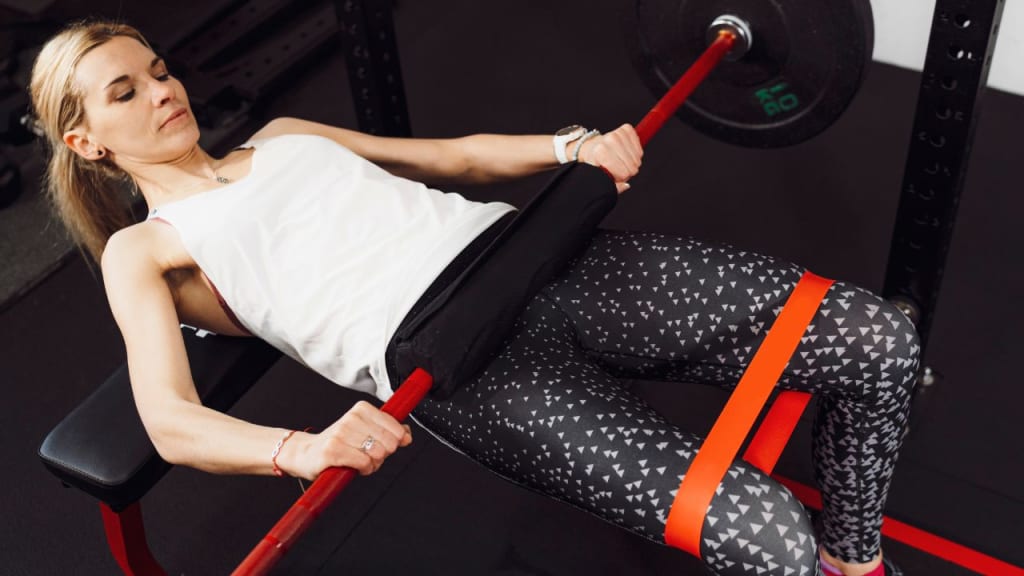How to Protect Your Hips When Doing Hip Thrusts
The mighty hip thrust is one of the best exercises for stronger glutes. Here's a look at how to pad the bar to reduce soreness and pain when doing barbell hip thrusts.

The hip thrust exercise is a powerhouse for sculpting and strengthening the glutes, hamstrings, and lower back.
While it's a straightforward exercise to learn, it can be uncomfortable due to the pressure of a loaded barbell on the hips, often resulting in bruising and soreness.
To address this discomfort and focus on proper technique and lifting heavier weights, various padding options can be employed.
Let's explore the advantages of different padding methods and help you choose the perfect one for your hip thrust workouts.
Barbell Squat Pad
Barbell pads are crafted from high-density foam, originally designed to reduce discomfort during squats. However, they've now become essential for hip thrusts.
They are easy to install, some with optional straps for added security, portable, and cost-effective.
Consider options like the Conquer Strength Barbell Pad, consistently ranked among the best squat pads, which offers extra thickness and durability, providing a comfortable hip thrust experience.

Hip Thrust Pads
With the surge in popularity of hip thrust exercises, specialized hip thrust pads have emerged. These flat pads rest between your hips and the barbell, offering cushioning.
Unlike barbell squat pads, they have an "open" design. The Rogue Abmat Hip Thrust Pad is a prime example, known for its sturdy top layer and even weight distribution, making it ideal for experienced lifters handling heavier weights.
Pool Noodle
For a creative and budget-friendly DIY option, head to a hardware or pool store and grab a pool noodle. Cut a section of the noodle, slice a vertical cut along the top, and snap it onto the barbell.
While suitable for beginner to intermediate lifters, it may not be sufficient for heavy weights exceeding 300lbs.
Yoga Mat
A yoga mat provides excellent protection for your hips and pelvis during barbell hip thrusts. Fold and wrap it under the barbell to achieve your desired level of padding.
Its flexibility allows you to adjust the thickness to your preference, making it a versatile option for lifters.
Towel
Another DIY option is using a towel wrapped around the barbell when doing hip thrusts. Towels come in various sizes and thicknesses, so you can fold them to increase the padding.
While not the most secure option, they offer basic protection for beginners.
Benefits of Using a Pad When Hip Thrusting
Hip thrust pads are essential for a more comfortable and injury-free hip thrusting experience.
They prevent bruising and soreness by cushioning the barbell's weight against the pelvis. This enables you to lift with confidence, add more weight to your routine, and accelerate glute muscle growth.
Muscles Worked with Barbell Hip Thrusts
Barbell hip thrusts primarily target the glutes and hip extensors. Additionally, they engage the lower back (erector spinae), knee extensors, and quadriceps muscles.
Compared to other lower-body exercises, such as back squats and split squats, barbell hip thrusts activate a higher number of glute fibers.
Variations of Hip Thrusts
Barbell hip thrusts can be intimidating, especially for beginners observing others lifting heavy weights. Fortunately, there are several variations to suit different fitness levels:
• Glute Bridge: A simpler version of the hip thrust.
• Banded Hip Thrusts: Incorporate resistance bands for added challenge.
• Dumbbell Hip Thrusts: Use dumbbells instead of a barbell. Allows for single leg variations, too.
• Stiff-Legged Deadlifts: Focus on hamstrings and glutes.
• Pause-Rep Hip Thrusts: Add a pause at the top of the movement for increased intensity and increased glute activation.
In conclusion, padding the barbell when performing hip thrusts is crucial for a comfortable and effective workout.
Whether you opt for a dedicated pad, a pool noodle, a yoga mat, or a towel, the key is to prioritize your comfort and safety while working on building those strong and shapely glutes.
Choose the padding method that suits your preferences and fitness level, and watch your glute gains soar!
About the Creator
YourWorkoutBook
YourWorkoutBook is a website devoted to strength training and fitness. We review the latest fitness accessories, cardio machines, strength equipment, and share our knowledge with millions of readers each month.
Enjoyed the story? Support the Creator.
Subscribe for free to receive all their stories in your feed. You could also pledge your support or give them a one-off tip, letting them know you appreciate their work.





Comments
There are no comments for this story
Be the first to respond and start the conversation.